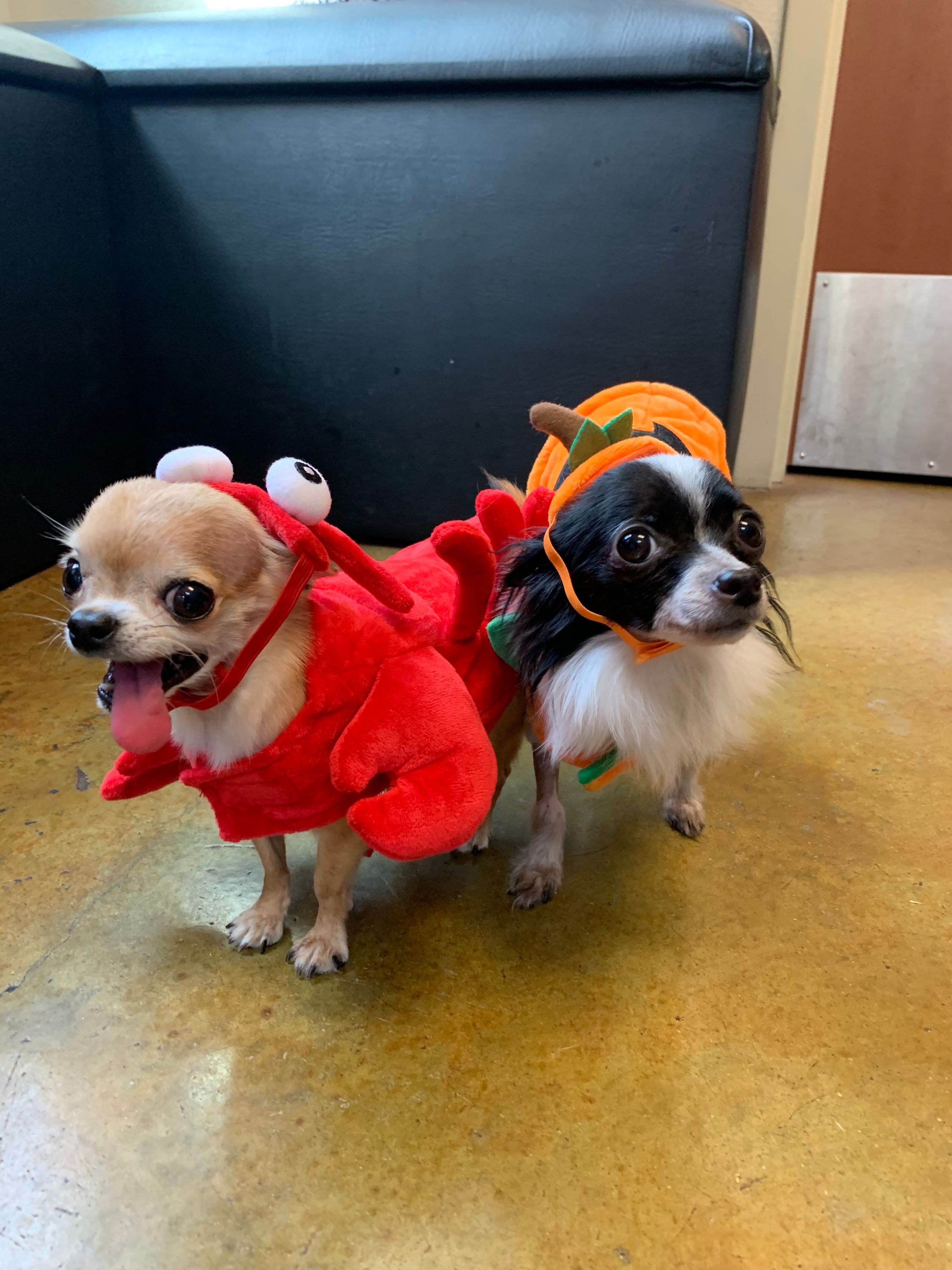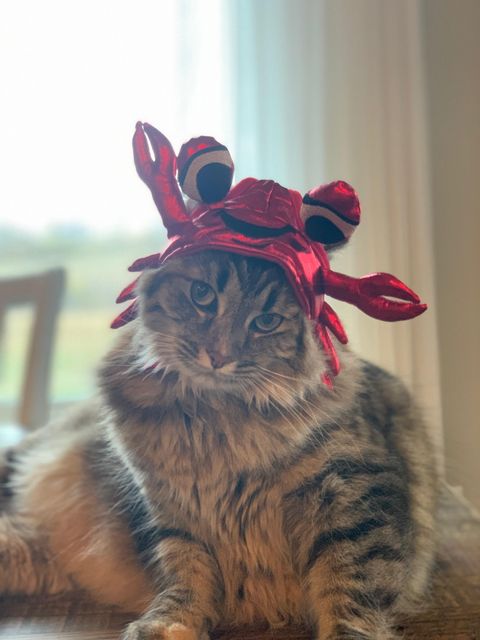Galloway Village Veterinary's Guide to Halloween Safety for Pets
- Oct 12, 2020
- Holidays, Tips & Advice
Watch your decorations!
Pets are attracted to bright lights in a darkened room. Be careful with your carved jack-o-lanterns, pets can easily knock over a lit pumpkin spilling hot wax everywhere, or potentially starting a fire. Curious cats are especially at risk of getting burned by the candle flames. Other potentially dangerous decorations include glow sticks and fake blood (possible poisons), fake spider webs (can choke or entangle pets), and strung lights. Popular Halloween plants such as pumpkins, gords, or corn are considered relatively non-toxic to consume by pets but can produce stomach discomfort.
Hide the trick-or-TREATS...
A general rule of dog and cat safety is to not feed them human food, and that especially goes for Halloween candy. Several popular Halloween candies are toxic to pets. Chocolate in all forms, especially dark or baking chocolate, can be very dangerous. Sugar-free candies containing the sugar substitute xylitol can cause serious problems. Candy can upset their stomach, resulting in diarrhea or vomiting. Packaging can cause choking or intestinal blockage. Make sure your kids know the difference between a treat for them and a treat for their four-legged friend. If you suspect your pet has ingested something toxic, please call us or the ASPCA Animal Poison Control immediately!
Make sure your pets have a safe space.
Before the night’s festivities begin, make sure your pets know there is a quiet room where they will be safe from all the Halloween activity. There can be lots of unusual activity and visitors arriving at the door during peak trick-or-treat hours, and too many strangers can be scary and stressful for pets. The continuous opening and closing of the door, the ringing of doorbells, and the general noise associated with Halloween can be confusing for your pet. Dogs may feel the need to protect their home and humans and may become aggressive to your spooky-looking visitors. If your pet is clearly very anxious, keep them in a separate room away from the front door. You can also minimize noise by sitting outside to keep trick-or-treaters from knocking on the door or ringing the doorbell. Be sure your pet is wearing proper identification if he or she accidentally escapes out the door. A collar with ID tags and/or a microchip can be a lifesaver for a lost pet.
 Be careful with costumes...
Be careful with costumes...
When choosing a costume for your pet, there are some safety tips to consider. Wearing a costume may cause stress for some pets. You know your pet better than anyone else so you know what they may tolerate and for how long. Don’t force your pet to wear a costume if it becomes obvious that they don’t like it. Make sure the costume doesn’t limit their movement, sight, or their ability to breathe, bark, or meow. Carefully inspect the costume for easily chewed-off pieces that could present a choking hazard. If your pet seems distressed or agitated by their costume, try something less intense like a festive bandanna instead! Signs of discomfort include folded down ears, eyes rolling back or looking sideways, a tucked tail, or hunching over. Maybe your pet is really laid back like our red lobster Toby and orange Jack-o-Lantern Chief! They don't mind playing dress-up for the night! If that's the case, be sure to check out our Facebook, Instagram, or Twitter to enter our Annual Halloween Costume Contest!



